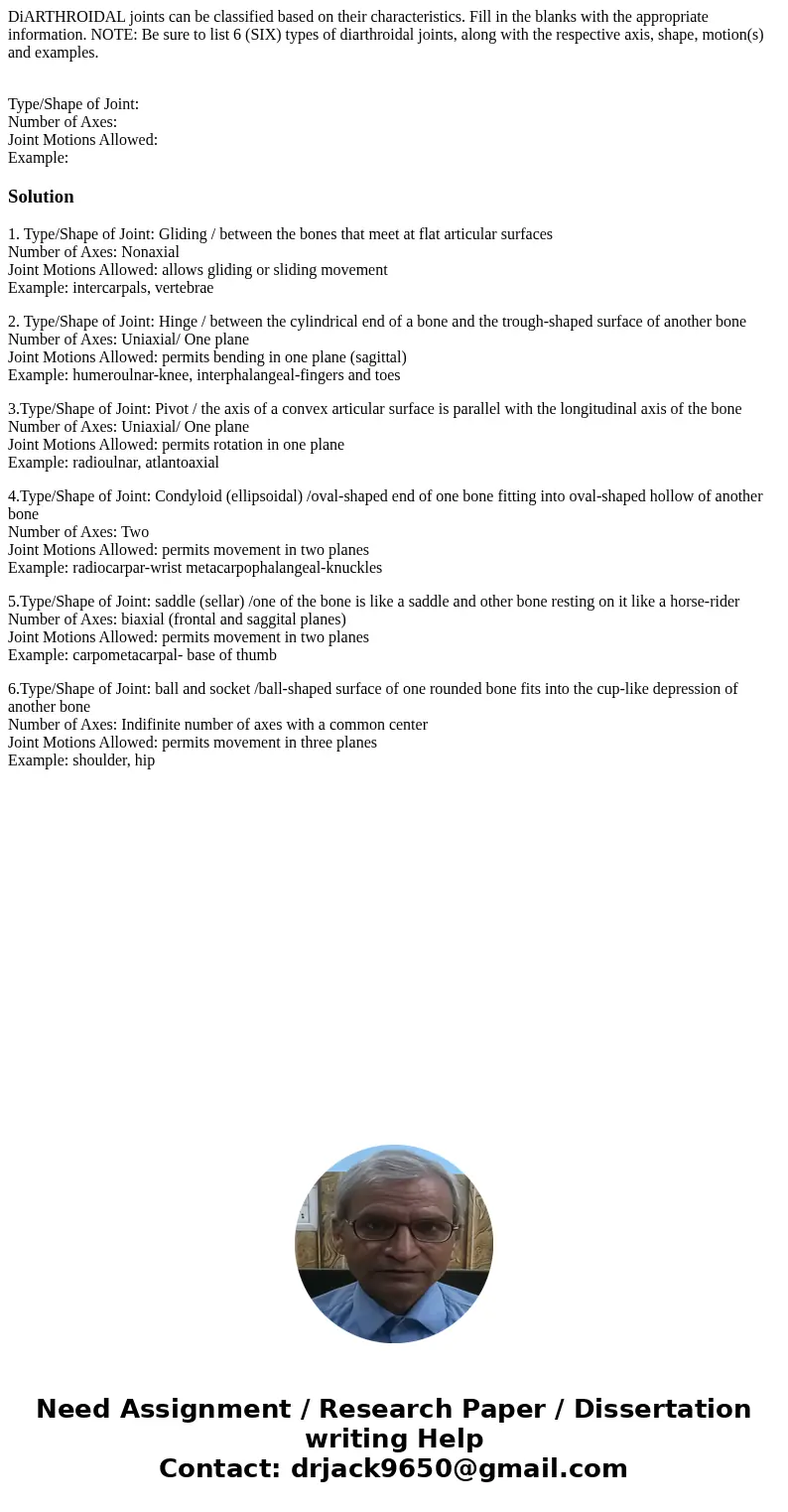DiARTHROIDAL joints can be classified based on their charact
DiARTHROIDAL joints can be classified based on their characteristics. Fill in the blanks with the appropriate information. NOTE: Be sure to list 6 (SIX) types of diarthroidal joints, along with the respective axis, shape, motion(s) and examples.
Type/Shape of Joint:
Number of Axes:
Joint Motions Allowed:
Example:
Solution
1. Type/Shape of Joint: Gliding / between the bones that meet at flat articular surfaces
Number of Axes: Nonaxial
Joint Motions Allowed: allows gliding or sliding movement
Example: intercarpals, vertebrae
2. Type/Shape of Joint: Hinge / between the cylindrical end of a bone and the trough-shaped surface of another bone
Number of Axes: Uniaxial/ One plane
Joint Motions Allowed: permits bending in one plane (sagittal)
Example: humeroulnar-knee, interphalangeal-fingers and toes
3.Type/Shape of Joint: Pivot / the axis of a convex articular surface is parallel with the longitudinal axis of the bone
Number of Axes: Uniaxial/ One plane
Joint Motions Allowed: permits rotation in one plane
Example: radioulnar, atlantoaxial
4.Type/Shape of Joint: Condyloid (ellipsoidal) /oval-shaped end of one bone fitting into oval-shaped hollow of another bone
Number of Axes: Two
Joint Motions Allowed: permits movement in two planes
Example: radiocarpar-wrist metacarpophalangeal-knuckles
5.Type/Shape of Joint: saddle (sellar) /one of the bone is like a saddle and other bone resting on it like a horse-rider
Number of Axes: biaxial (frontal and saggital planes)
Joint Motions Allowed: permits movement in two planes
Example: carpometacarpal- base of thumb
6.Type/Shape of Joint: ball and socket /ball-shaped surface of one rounded bone fits into the cup-like depression of another bone
Number of Axes: Indifinite number of axes with a common center
Joint Motions Allowed: permits movement in three planes
Example: shoulder, hip

 Homework Sourse
Homework Sourse